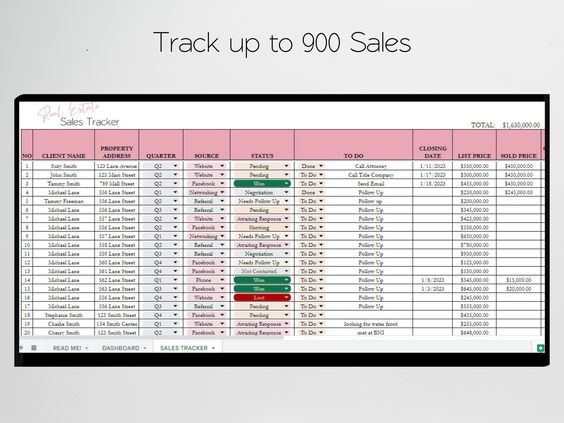
In the world of data management, spreadsheets are essential tools. Yet, many of us overlook the importance of design and structure in our spreadsheets. The recent New York Times article on “spreadsheet rectangles” has sparked renewed interest in this simple but powerful concept. This blog post will explore the fundamentals and benefits of effective spreadsheet design for data analysts, office professionals, and business owners.
Unpacking the Concept of Spreadsheet Rectangles
The New York Times article highlighted the concept of “spreadsheet rectangles” as a method for organizing and visualizing data. This approach emphasizes the importance of structuring spreadsheets into neat, rectangular blocks, which can enhance readability and usability. For many, this was a revelation, showcasing how thoughtful design can simplify complex data sets.
The Importance of Spreadsheet Design in Professional Settings
Spreadsheets are more than just data repositories; they are dynamic tools for analysis and decision-making. Properly designed spreadsheets can significantly enhance productivity and accuracy in data management. From small businesses to large corporations, the way data is presented can influence critical business decisions. Therefore, mastering spreadsheet design is crucial for professionals who rely on data.
Principles of Effective Spreadsheet Design
Effective spreadsheet design is rooted in several key principles. These include:
Layout Organization
A well-organized layout is the backbone of any functional spreadsheet. By arranging data into clear, logical sections, you make it easier for users to find and understand information. This involves grouping related data together and using consistent formatting throughout the spreadsheet.
Consistent Formatting
Formatting isn’t just about aesthetics; it’s about making your data accessible and comprehensible. Use consistent font styles, sizes, and colors to differentiate between various types of data. Highlight important figures and use borders to separate different sections.
Use of Formulas
Formulas are the engine of a spreadsheet. They automate calculations and data analysis, reducing the risk of human error. Familiarize yourself with essential formulas like SUM, AVERAGE, and VLOOKUP to enhance your spreadsheet’s functionality.
Case Studies of Effective Spreadsheet Design
Let’s look at some real-world examples where improved spreadsheet design has made a significant impact:
Small Business Inventory Management
A small retail business revamped its inventory management spreadsheet by organizing data into clear categories and applying conditional formatting to highlight low stock levels. This simple redesign saved hours of manual checking and reduced stockouts by 20%.
Financial Analysis for Startups
A startup used a well-structured financial model to attract investors. By presenting financial projections in a clean, easy-to-read format, they were able to clearly communicate their business plan and secure funding more efficiently.
Marketing Campaign Tracking
A marketing team improved their campaign tracking by creating a spreadsheet that included dynamic charts and pivot tables. This allowed them to quickly analyze campaign performance and adjust strategies in real time, leading to a 15% increase in ROI.
Practical Tips for Creating Efficient Spreadsheets

Creating an efficient spreadsheet doesn’t require advanced skills, just attention to detail and best practices:
Start with a Template
Templates can provide a solid foundation for your spreadsheet. Many templates are available online, catering to various needs such as budgeting, project management, and sales tracking.
Keep It Simple
Avoid clutter by only including necessary data. Use separate sheets for different data types and link them when needed. This makes your spreadsheet more manageable and less intimidating for new users.
Utilize Data Validation
Data validation helps ensure that the data entered into your spreadsheet is accurate and consistent. Use drop-down lists, checkboxes, and input messages to guide users and reduce errors.
Future of Spreadsheet Design in Data Analytics
The field of data analytics is evolving rapidly, and spreadsheet design is no exception. With advancements in machine learning and AI, we can expect spreadsheets to become even more powerful. Tools like Google Sheets and Microsoft Excel are continuously updating features that leverage AI to automate data analysis and visualization.
Integration with Other Tools
Future spreadsheets will likely integrate seamlessly with other data management and analytics tools. This will allow for more comprehensive data analysis and real-time updates across platforms.
Enhanced Collaboration Features
As remote work becomes more prevalent, the ability to collaborate on spreadsheets in real-time will be increasingly important. Enhanced collaboration features will make it easier for teams to work together, regardless of location.
AI-Powered Insights
AI will play a significant role in the future of spreadsheet design. Features like predictive analytics and automated data cleaning will help users make more informed decisions without extensive manual effort.
Continuous Improvement in Spreadsheet Design
To stay ahead in the data management game, continuous improvement in spreadsheet design is essential. Regularly update your skills and stay informed about new features and best practices. Attend webinars, take online courses, and join professional communities to share knowledge and learn from others.



